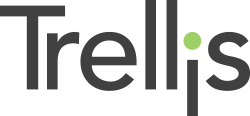Indeed, more than three-quarters of employees (77%) say they have been concerned about their financial well-being since the COVID-19 outbreak1 and 82% will rely on their workplace retirement plan as a primary income source in their post-working years. That is, if they can get there — four in five employees expect to continue working for pay after “retiring.”
In addition, many simply can’t afford to retire; the median household retirement savings is just $50,000.1 That’s nowhere near the 60-80% replacement income financial experts say most people need to maintain their pre-retirement standard of living.
What does all this say about retirement readiness in America? More importantly, what does it indicate about the effectiveness of workplace retirement plans?
Employers should evaluate their plan’s value through the lens of helping more employees retire on time and with dignity. That means getting employees to recognize that saving for retirement isn’t “optional” if they want to stop working someday. It also means providing them with the right tools toward helping them save enough to replace their income for 10, 20, 30 or more years.
The case for automatic features
How can employers more effectively help employees build adequate retirement savings? It isn’t complicated.
Employers have a ready-made tool in their arsenal that vastly simplifies retirement savings: automatic plan design features. These include auto enrollment, auto escalation and auto-diversification through qualified default investments, such as target date funds.
Auto features have become a best practice in retirement plan design to help improve employee participation and savings rates. In fact, two-thirds of employers who have adopted auto features have experienced a direct benefit to plan outcomes.2
Is it better for employers to use auto features to help employees make sound financial decisions for the future? The short answer is yes. Let us show you how.
Help your employees start
With automatic enrollment, employees are enrolled into the plan without needing to take any action — unless they opt out. One obvious benefit of automatic enrollment is that it drives higher participation rates; in fact, plans with this feature have an average participation rate of 87%.3
In most cases, employees are enrolled at a default deferral rate of between 3-6%4, and their contributions are directed to a diversified qualified default investment alternative, such as a target date fund.
Help them save more
In addition, employers can use auto escalation, another plan design feature, to help improve employees’ savings rates over time. The typical default increase is 1% per year. While automatic enrollment improves savings rates, adding auto escalation boosts the impact.
In plans with neither automatic enrollment nor auto escalation, only 44% have savings rates above 10% (including both employee deferrals and employer matching contributions). In plans that implement automatic enrollment only, the percentage of participants with savings rates above 10% increases to 67%. However, where plan sponsors have implemented both automatic enrollment and auto escalation, that percentage rises to 70%.5
Help them diversify
Finally, auto-diversification rounds out the auto feature trifecta. Often, this looks like automatically investing participant contributions into a qualified default investment alternative (QDIA) like a target date fund (TDF) or managed account.
This typically occurs when a participant has not made an investment election on their own. Automatically directing contributions to a target date fund or similar investment that is appropriately diversified for a participants’ age and stage of life enables them to appropriately invest for retirement, even though they haven’t actively selected their own investments.
Most TDFs also have an automatic rebalancing feature, so the participant’s portfolio remains properly invested based on their anticipated retirement date, regardless of market performance.
Plan effectiveness is measured by outcomes
Automatic features are a helpful plan design tool that employers can implement to assist employees in getting on track toward having the income they need to retire in comfort. In addition, it’s important for employers to evaluate their plan’s effectiveness based on retirement readiness — because outcomes are what truly matter.
Once auto features are in place, employers should also pay careful attention to plan health metrics, such as projected monthly income (PMI) – an illustration of a participant’s estimated monthly income stream in retirement based on their current savings. Participants with low PMIs may be at greater risk of not adequately replacing their income in retirement.
Another metric, the income replacement ratio (IRR), provides a glimpse of retirement readiness based on a specific income replacement percentage, such as 70%, using current and projected savings. Participants with low IRRs may be at greater risk of running out of money in retirement.
Understanding these metrics and the positive impact of auto features can help you evaluate your participants’ retirement readiness — and your plan’s effectiveness. With these insights, you can intelligently architect your plan to “normalize” retirement savings and help your employees work towards successfully achieving their retirement goals.
